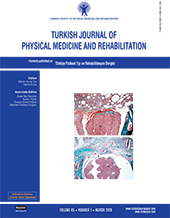Effectiveness of medial-wedge insoles for children with intoeing gait who fall easily
Patients and methods: Between January 1997 and July 2014, a total of 51 children (24 males, 27 females; mean age 5.0 years; range, 3 to 8 years) who were treated for an intoeing gait symptom of easily falling using the MWI (toe-in gait group) were included. The effectiveness of the MWI was evaluated based on the scores reported by children and their parents on a scale. Physical findings of the study group were also compared with a control group consisting of seven healthy children (4 males, 3 females; mean age 5.2 years; range, 3 to 6.2 years). Foot stability with and without MWI were assessed.
Results: The MWI was found to be effective in 80.8% of the toe-in gait group. Bilateral sum of the internal rotation angle of the hip (IRAB) was significantly higher (136±17°) (p=0.007) and bilateral sum of thigh foot angle (TFAB) significantly lower (-27±21°) (p<0.001) before using MWI in the toe-in gait group, compared to the control group. The maximum range of motion of the foot in six children in the toe-in gait group significantly decreased from 14.1±5.0° without MWI to 8.2±3.0° with MWI (p=0.002) in the gait analysis.
Conclusion: These study results suggest that MWI is effective in reducing the risk of falling in children with intoeing gait, mainly due to the internal torsion of the tibia or femur. In addition, it appears to be effective in improving the maximum range of motion of the foot.
Keywords : Gait analysis, medial-wedge insole, orthosis therapy, toe-in gait

















